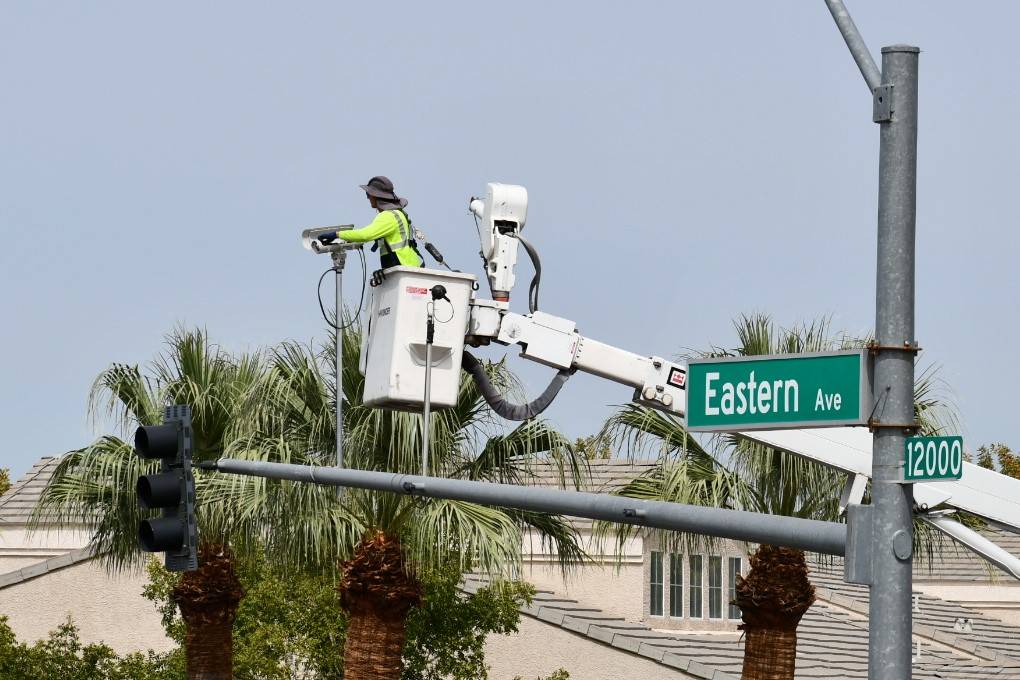Adaptive traffic signals cut travel time by 25% on Henderson road

After a successful test run, officials are giving adaptive traffic signals on a stretch of Eastern Avenue in Henderson the green light.
The pilot program that ended last month saw travel time on the 3.6-mile stretch, from Beckler Drive (near Sunridge Heights Parkway) to Pebble Road, drop 25 percent. That result has led Henderson, the Regional Transportation Commission and Clark County to keep the signals in operation.
“The signal system has the ability to sense demand and adjust signal timing in real time,” said Theresa Gaisser, FAST director for the RTC. “This maximizes the amount of green light time available to move traffic up and down Eastern as efficiently as possible.”
It’s still undecided if the system will be left in place permanently.
Results of how much the adaptive signals cut down on red-light wait times varied, but the most noticeable impact was seen on the nighttime rush hour.
“The most dramatic improvement was for northbound traffic during the evening peak,” Gaisser said. “The average time spent at red lights per vehicle went from 159 seconds down to 34 seconds. That’s a 78.6 percent improvement.”
The signal system senses demand and adjusts signal timing in real time, maximizing the amount of green-light time available to move traffic up and down Eastern.
The system includes sensors to collect data, which is fed into a controller to evaluate and develop signal timing improvements and modifications. Then the adaptive technology implements the signal timing updates. The process is updated on a continual basis to ensure signal timing is responding to real-time conditions.
Traditional signals require manual traffic counts and periodic timing adjustments, which do not reflect real-time traffic conditions.
As with any pilot program, there were a few tweaks needed that crews were able to make without disrupting the system.
“The infrared vehicle detection system currently utilized by the city of Henderson had to be swapped out for the camera detection system used by the Rhythm Engineering Adaptive Traffic Signal Control software, which was trialed during project,” Gaisser said.
“Additionally, the signal timing on St. Rose (Parkway) approaching the Eastern intersection was adjusted to improve progression of St. Rose traffic at Eastern. Changes were made to the adaptive system after the initial deployment to increase green traffic signal times for the traffic movement at some of the side streets and left turns.”
With the data the RTC has received from the test run, it is reviewing other corridors that could benefit from the adaptive signal technology. The ideal corridors feature a mix of residential and commercial properties.
“RTC is always looking for ways to optimize existing traffic infrastructure in Southern Nevada, which includes improving safety, preserving capacity, and reducing congestion,” Gaisser said. “Trialing adaptive traffic signal control technology was an opportunity for the RTC to add another potential tool to our strategies to achieve these goals.”
Contact Mick Akers at makers@reviewjournal.com or 702-387-2920. Follow @mickakers on Twitter. Send questions and comments to roadwarrior@reviewjournal.com.